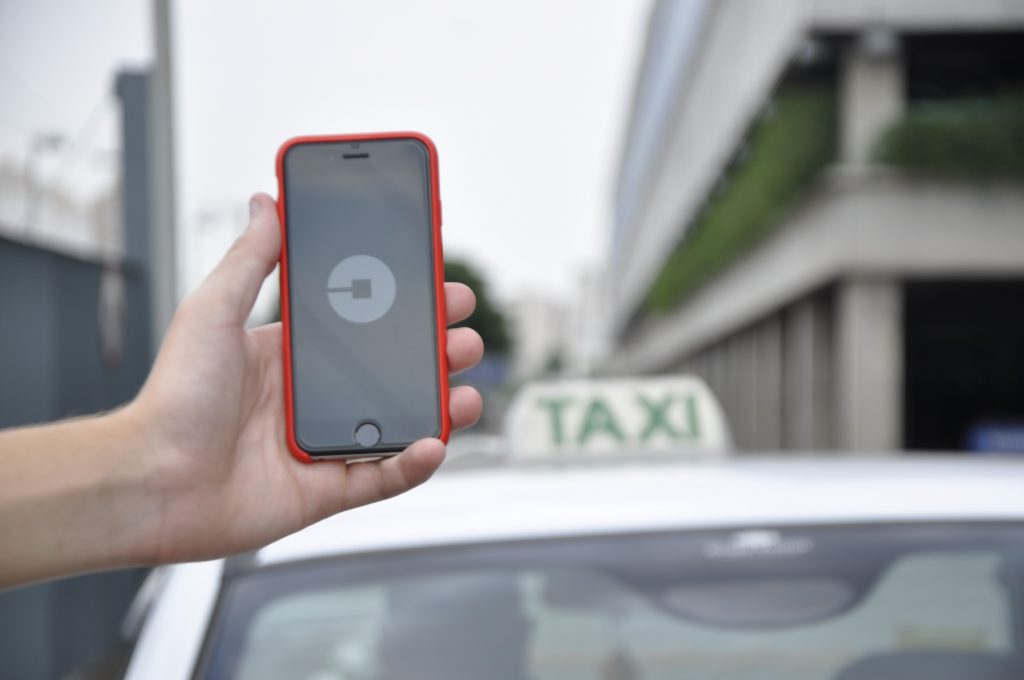Taking a look at Uber’s devious practices in the business community
Last month’s cat-and-mouse game between Uber drivers and Bureau du taxi de Montréal (BTM) officers led to confusion, tension, vehicle seizures and even arrests.
BTM claims Uber drivers cannot offer paid rides without a taxi-driver’s licence or permit. Despite this legal grey area, Uber offered to pay their drivers to disobey the Quebec law. The resulting animosity between both groups is leading to groupthink, whereby Uber and taxi supporters irrationally conform to the views held by their own in-groups at the expense of actual facts.
As a fellow digitally literate young professional, I can see why it is so easy to buy into this hype and jump on the Uber-wagon. It’s a convenient, flexible and affordable transportation solution for many customers. Uber also allows common drivers to cash in on their otherwise non-monetized driving skills. In fact, the company claims a driver can earn up to $90,000 a year. So, how is this sharing economy not a win-win?
The problem lies in the dynamics of the relationship between Uber and its drivers. It is in Uber’s best interest to hire as many drivers as possible to keep up with the growing demand. Uber promises drivers a business-to-business (B2B) partnership, whereby Uber and drivers grow the brand ‘together’ to attract more consumers. As such, drivers feel solidarity with Uber, even though Uber is the sole owner of the brand.
This ambiguity in roles created by drivers’ illusory belief in an equal partnership precipitates a business dilemma. As Uber scales their product, which consists of others’ labour and transactions, less consideration is attributed to drivers’ needs. For this reason, a dissociation within this relationship is inevitable.

So, how about that advertised $90,000 annual salary? Not surprisingly, a 2015 investigation by Philadelphia City Paper suggested that Uber drivers would have to work 27 hours a day to earn that much.
As users, we falsely assume Uber is socially and technologically innovative. According to Stanford Business, the value of social innovation accrues primarily to the society rather than single individuals. Specifically, the added value of a socially innovative idea is necessarily greater than the gains acquired by individual entrepreneurs. I do not think small-talk with strangers qualifies as social innovation.
Perhaps then Uber’s source of innovation is more technological than social. However, the truth is that technology actually plays a secondary role for Uber. Although it is evident that much effort has been invested into the app’s programming, nothing is overtly proprietary about its development.
Uber’s talents are not epitomized by cutting-edge innovation. Rather, Uber crookedly differentiates itself from the competition by finding legal loopholes and bending the rules. Worst still, The Observer claims that Uber has previously sabotaged Lyft (a competing app) by ordering thousands of fake rides.
Uber’s $62.5 billion USD net worth has lured governing bodies into making special, loose accommodations and exemptions. For example, training for Uber drivers consists of watching a 13 minute YouTube video, the privacy of customers’ information is questionable, and background checks are easy to get around, according to a report by The Globe and Mail. This is dangerous for several reasons. First, consumers’ health and safety is reduced merely to an afterthought instead of a top priority. Undeniably, taxi drivers require much more certification and testing.
Secondly, Uber has a disproportionately stronger negotiating position, and so drivers are left without any leverage in all key decision-making. Uber has the power to jack up prices when demand drastically increases as it does on holidays, whereas taxi drivers are required to charge regular prices and accept all customers without discrimination.
Lastly, Uber drivers are hired as so-called independent contractors—not employees, according to a report by CBC News. This means Uber can get away with denying responsibility or lying without ever being held accountable. For example, The Observer reported that Uber has been known to slash fare prices, which caused drivers’ earnings to drop below the minimum wage. Then, Uber actively blocked drivers’ repudiating tweets to minimize harm to their brand. Clearly, sharing is not always caring, especially when Uber doesn’t share any of the accountability.
Unlike taxi drivers, Uber drivers take on all the risks but none of the benefits. Uber drivers pay for all their car insurance, inspections, gas, repairs, maintenance, depreciation and sales tax. Meanwhile, drivers are rewarded with insufficient training, marketing advice and profit margins.
In sharing economies, users rent or borrow assets owned by someone else. Unfortunately, this business model has atomized the workplace. ‘Micro-entrepreneurs’ are working in ‘micro-economies.’ The result—a perfectly schemed catch-22—as consumers’ influence shrinks, the power of ‘sharing’ monopolies grow. All the while, we the consumers turn a blind eye. Uber has all the leverage, and we gave it to them. It’s time we jump off the Uber hype-wagon before it drives us into the ditch.




